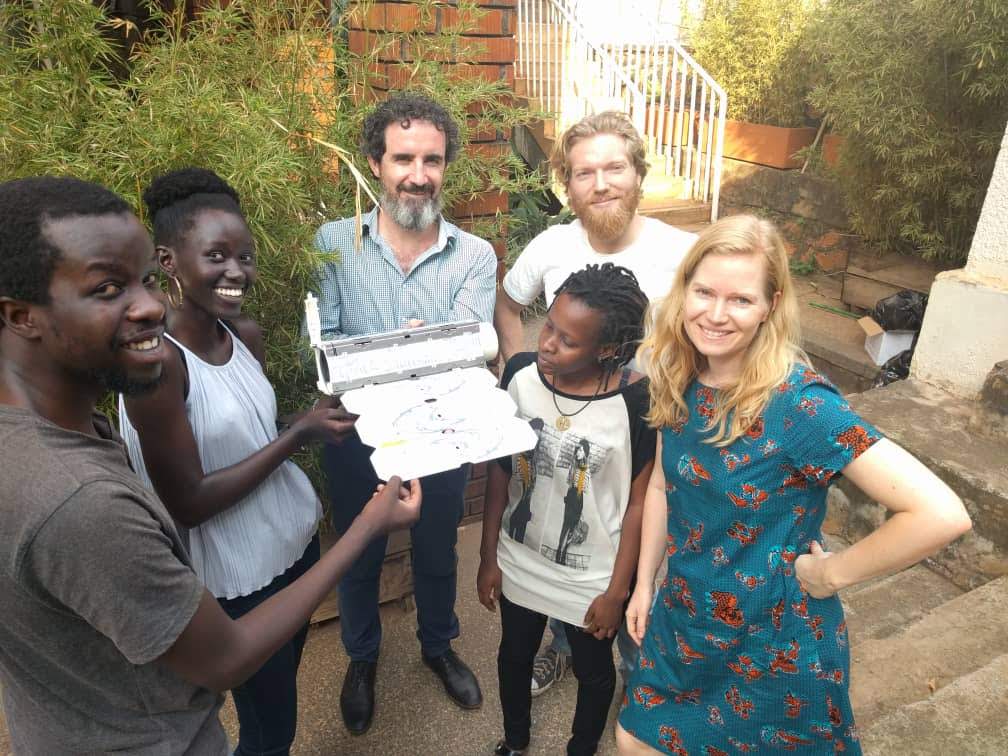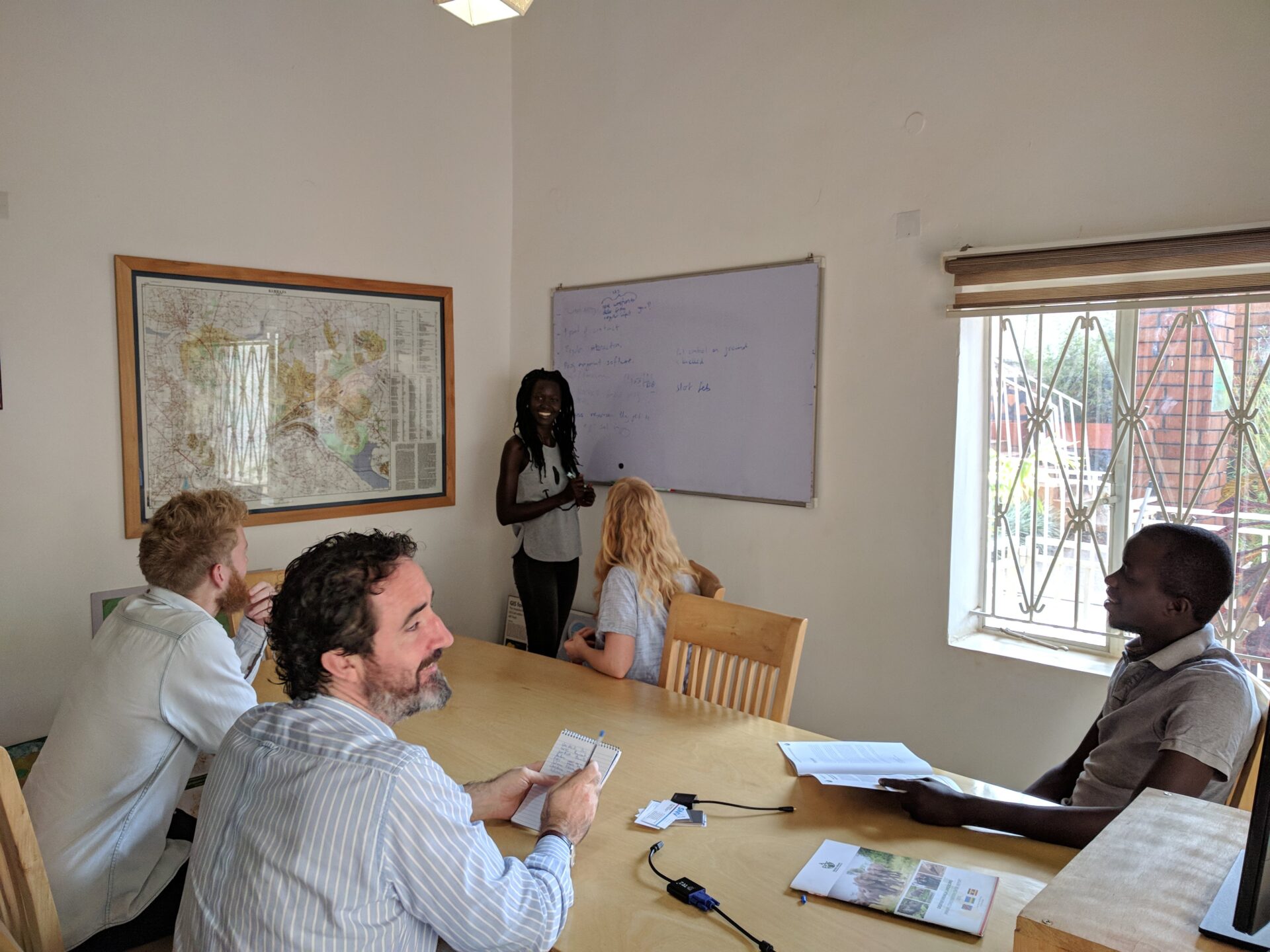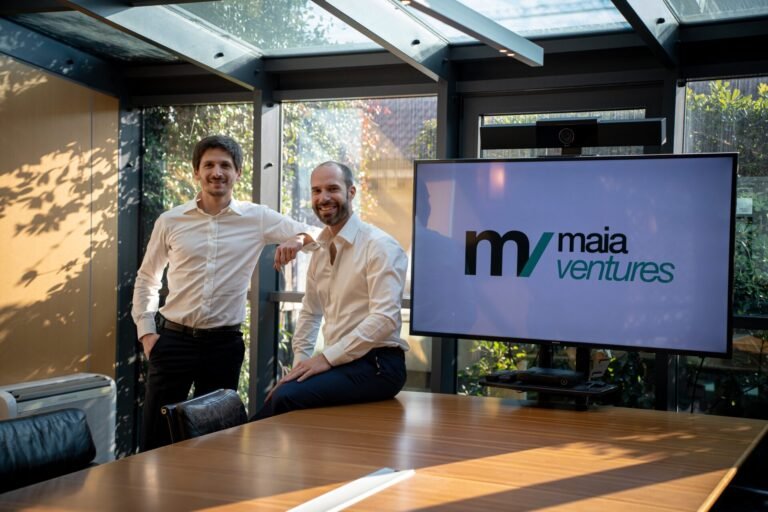
Bernard Wright has more than 20 years of experience operating at the intersection of technology and sustainability in the food and agriculture sectors in emerging markets. He has founded multiple startups in the space.
The views expressed in this article are the authors’ own and do not necessarily represent those of AgFunderNews.
The Anecdote
I handed a memory stick to an official at an East African ministry. It held 25 data points on about 50,000 community facilities; roughly 1.25 million fields of mostly numeric data we’d painstakingly gathered.
“Thanks,” he said. “We’ll start typing it in now.”
I smiled, assuming it was a joke. It wasn’t.He opened the door to show me 15 data-entry clerks, seated and ready to retype every letter and number, line by line.
“We had an issue with our vendor over subscription fees,” he explained. “Now we can only access the front end, so we must manually enter everything.”
Vendor locked. That wasn’t the first time an African institution paid the price for inflexible software. It’s not an issue unique to Africa, but the stakes are higher there due to fewer local providers, under-resourced SMEs, prohibitive switching costs, and tech providers’ high failure rate.There’s another way. And as the AI world is discovering, open source might be it.
The AI Race
Chinese upstart Deepseek shook up the AI industry. By embracing open-source, it built on existing breakthroughs and leveraged communities to develop a model rivaling those of global leaders, at a fraction of the cost and effort. As Silicon Valley venture capital trend-setter Marc Andreesen noted, “DeepSeek R1 is one of the most amazing and impressive breakthroughs I’ve ever seen, and as open source, a profound gift to the world.”
While it hasn’t yet surpassed the US, China is not far behind in the AI race. The widespread diffusion of Chinese AI is facilitated by its open-source licensing. And it is making many in the US nervous.
A leaked internal Google memo makes the point plainly: “We have no moat… open source is lapping us.”Open source works. It’s driven digital innovation in the past and laid the foundation for many state-of-the-art AI systems today. Linux, Python, and Android proved it globally. DHIS2 and Open Data Kit proved it in emerging markets. Deepseek proved it in AI.

The Open Advantage
Sovereignty: With open source, local organizations gain control over their data, the flexibility to grow on their terms, and the leverage to shape tools that truly fit their realities. As that leaked Google memo states, “The value of owning the ecosystem cannot be overstated.”
Cheaper: “Without open-source software, firms would pay an estimated 3.5 times more to build the software and platforms,” Harvard Business Review noted last year.
Foundational investments and R&D typically cost the most for a technology like this. If that cost is shared among contributors, the cost to build and innovate is lower.
Faster: As AI thought leader Andrew Ng recently said, “When you can test 20 ideas per month, it dramatically changes what you can do compared to testing one idea per month.”
- With open source:
Builders build on existing foundations; they don’t start from scratch. - Shared ownership enables scaled contributions.
- When users co-own the product, they don’t just consume; they improve it.
- Diverse contributions allow rapid development and enhanced security.Open-source use diffuses; sign-ups are fast when sign-offs are painless.
Resilient: Open source has no single point of failure. Unlike my startup and others that folded, open-source tools exist beyond any one company or government. The code is out there. If one node falls or shifts focus, the next picks up the baton.
When businesses rely on a tool they control, they invest in its survival.
Open source is interoperable by its nature. Interoperability fuels continuous improvement, relevance and resilience.
The AgTech struggle
My startup, Fieldy, developed national production forecasts using crowdsourced data from 193,000 fields. We scaled to 18 countries, secured funding and revenue, and built a reasonable customer base.Then, we failed.
Africa is a tough place to run an agtech business supporting agri SMEs. We weren’t alone. Even the well-funded trailblazers iProcure (raised $17.2 million), WeFarm (raised $32 million), and GroIntelligence (raised $117 million) failed. Twiga (raised $180 million) is currently on shaky ground. Customers are left stranded and tech-sceptical.The agri SME demand is massive, but the supply of reliable, appropriate solutions is low, and the current model for tech-supporting agri SMEs in smallholder markets is struggling.
“Purely commercial agtech models don’t work in these markets yet—which is why we need social enterprise models that blend public and private capital efficiently,” noted John Mundy of One Acre Fund.
The darlings charting hockey stick scale growth in Africa (One Acre Fund, Farmerline, Pula, Apollo, Thrive) are the exceptions rather than the rule, and depend on grants, donors and investors to supplement revenue. Where startups struggle and investors hesitate, agri SMEs remain underdeveloped.
Digitalization is a critical factor for the stability and growth of these SMEs, as it enhances operational efficiency and improves access to financing. However, the widespread adoption of digital tools is hampered by significant obstacles. Proprietary software, for example, often comes with vendor lock-ins and high subscription fees, which are about 35% more expensive in Africa. These factors create barriers that limit the uptake of technology.

How does one bypass these barriers?
One example is Odoo Community, the subscription-free and open-source version of the Odoo business management software. It includes a wide range of core modules such as CRM, sales, inventory and accounting. It is maintained by Odoo S.A. and supported by a global community of developers and users.
AgriOS, developed by Advance Insight and built on Odoo Community, is a simplified ERP customized for less-resourced agri SMEs and coops. The software is subscription-free, open-source and plug-and-play. AgriOS is not chasing technical superiority but adoption. In this space, it’s not the most advanced system that wins, but the one that spreads, adapts, and sticks. AgriOS is open for early adopters now.The challenge: monetizing free
An open-source business model has challenges, like the lack of centralized support. It is a powerful approach in the proper context, but not easy.One issue is funding it over the longer term.But open doesn’t mean unpaid. Like in open-source AI, where monetization happens downstream, at AgriOS, we’re betting that agri-SME software can be free at the core yet sustainable through a shared investment:
- Downstream buyers and processors will fund features, tools, training, and customization for their upstream suppliers. Traceability regulations like the EU Deforestation Regulation (EUDR), with non-compliance fines of 4% of EU turnover, are a game-changing driver.
- Multiple organizations can pool their budgets to procure a service from a single provider.
- There is cross-subsidization from those developing commercial products.
- Public-good funding and grants exist. With scale and interoperability, these will reduce over time, but as a public good, they will likely be required in the medium term.
The Challenge: Building Community
Building open source is about more than code; it’s about community. And that’s a tricky part. It is tough to rally individuals across diverse geographies, organizations, and roles, each with their mandates, resources, and timelines. There’s no built-in incentive system, no guaranteed support team. Instead, success depends on shared belief, clear documentation, and the slow, deliberate work of building trust and momentum.
To build that AgriOS community, we’re investing in training and resources so startups, freelancers, competitors, and in-house teams can use and/or adapt it however they want. We’re partnering with organizations like Small Foundation and open-source titans (more on that to come), raising collaborative funding, and prioritizing interoperability with complementary tools. Open source lowers costs but only works when shared ownership is real.
An open future
We know the risks. But we also know this: the demand is actual, the failures are visible, and the open-source model has worked before.There is space for proprietary tools, service providers, and solutions. In many cases, they work well. But in others, they don’t. And that’s where a different approach is needed.
Some challenges are too significant to be solved behind paywalls. To move forward, we need to build the pre-competitive foundations that enable accurate, scalable solutions.
Open-source isn’t just about sharing code. It’s about collaborating on what no single company can solve alone. And there are a lot of smart, committed folks out there with long-term perspectives, an in-depth understanding of localized needs, and decent resources. When aggregated, we can do great things.
It’s time to start.
The post Guest article: The AI race has a lesson for African agri SME support appeared first on AgFunderNews.




